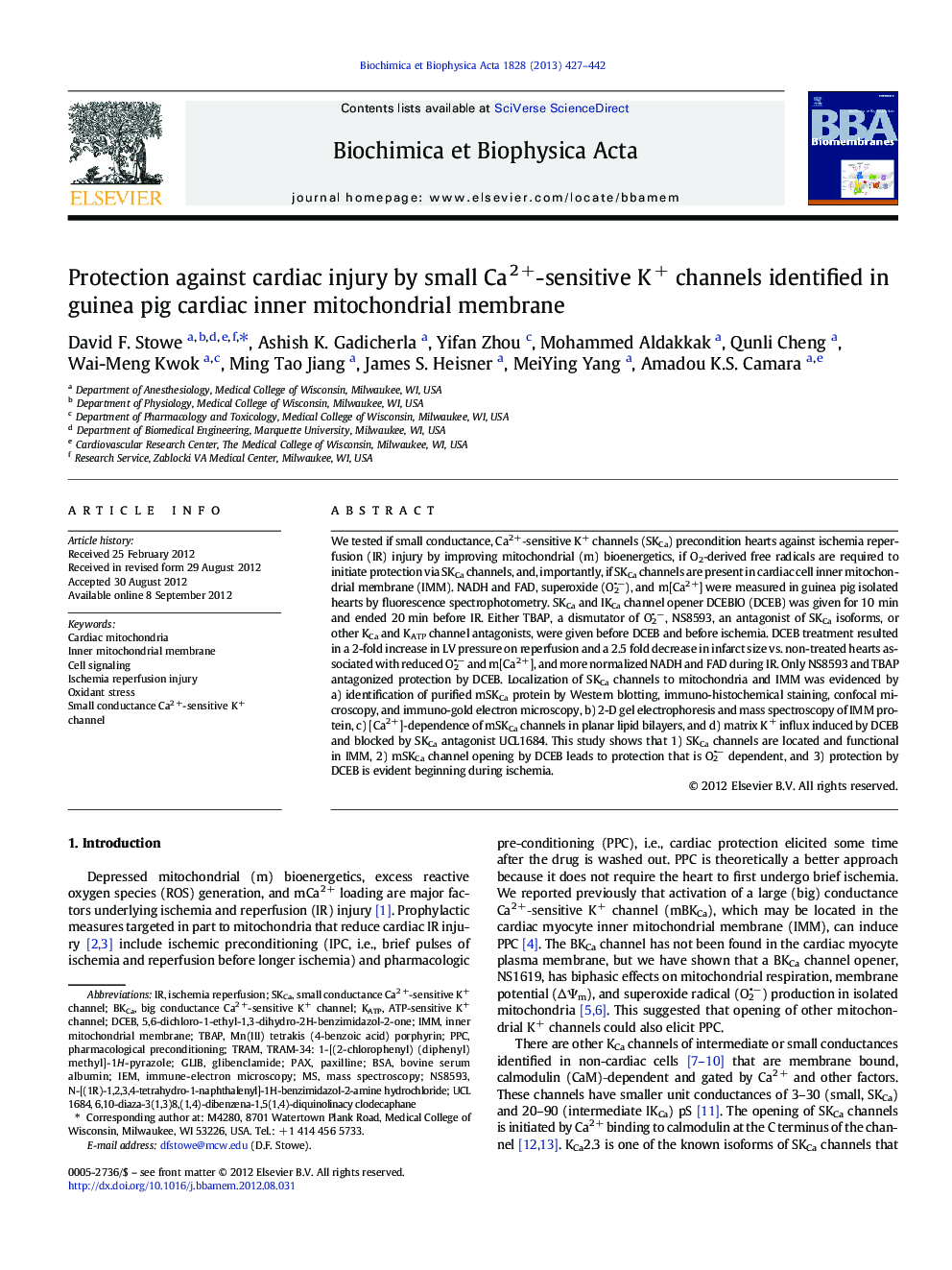| Article ID | Journal | Published Year | Pages | File Type |
|---|---|---|---|---|
| 1944379 | Biochimica et Biophysica Acta (BBA) - Biomembranes | 2013 | 16 Pages |
We tested if small conductance, Ca2 +‐sensitive K+ channels (SKCa) precondition hearts against ischemia reperfusion (IR) injury by improving mitochondrial (m) bioenergetics, if O2‐derived free radicals are required to initiate protection via SKCa channels, and, importantly, if SKCa channels are present in cardiac cell inner mitochondrial membrane (IMM). NADH and FAD, superoxide (O2−), and m[Ca2 +] were measured in guinea pig isolated hearts by fluorescence spectrophotometry. SKCa and IKCa channel opener DCEBIO (DCEB) was given for 10 min and ended 20 min before IR. Either TBAP, a dismutator of O2−, NS8593, an antagonist of SKCa isoforms, or other KCa and KATP channel antagonists, were given before DCEB and before ischemia. DCEB treatment resulted in a 2-fold increase in LV pressure on reperfusion and a 2.5 fold decrease in infarct size vs. non-treated hearts associated with reduced O2− and m[Ca2 +], and more normalized NADH and FAD during IR. Only NS8593 and TBAP antagonized protection by DCEB. Localization of SKCa channels to mitochondria and IMM was evidenced by a) identification of purified mSKCa protein by Western blotting, immuno-histochemical staining, confocal microscopy, and immuno-gold electron microscopy, b) 2-D gel electrophoresis and mass spectroscopy of IMM protein, c) [Ca2 +]‐dependence of mSKCa channels in planar lipid bilayers, and d) matrix K+ influx induced by DCEB and blocked by SKCa antagonist UCL1684. This study shows that 1) SKCa channels are located and functional in IMM, 2) mSKCa channel opening by DCEB leads to protection that is O2− dependent, and 3) protection by DCEB is evident beginning during ischemia.
Graphical abstractFigure optionsDownload full-size imageDownload high-quality image (90 K)Download as PowerPoint slideHighlights► We identify small Ca2 +‐sensitive K+ channels in guinea pig cardiac mitochondria. ► Identity based on Western blot, confocal microscopy, immune-gold EM, and MS ► Function based on K+ flux, Ca2 +, apamin, and UCL1684‐sensitive conductance ► Channel agonist, DCEBIO protects hearts against IR injury, and antagonist NS8593 blocks protection. ► Mechanism of protection in isolated hearts is mediated by the superoxide radical.
